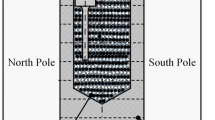Abstract
Micro-electro-discharge machining (micro-EDM) is a potential micro-manufacturing technology. However, the surfaces of micro-components manufactured by micro-EDM will exhibit micro-cracks and micro-craters, and then micro-cracks and micro-craters will produce notch effects leading to stress concentration and reduction of fatigue strength. In particular, the roughness and size of tiny components strongly affect the strength of micro-scale components. Therefore, this study performs micro-tensile tests for micro-shaft specimens of various roughness and size to investigate the influence of roughness and size on the fracture strength of micro WC-shafts manufactured by micro-EDM. Experimental results indicate that the surface roughness, axial surface area, volume, and length of the specimen affect its fracture strength. For specimens of the same size, the mean fracture strength decreases as the surface roughness increases, and the fracture probability of the specimens also increases (roughness effect). For specimens with the same diameter and roughness, increasing the length, volume or axial surface area reduces the mean fracture strength, and increases the fracture probability (size effect).
Similar content being viewed by others
References
Reynaerts D, Meeusen W, Brussel HV (1998) Machining of three-dimensional microstructures in silicon by electro-discharge machining. Sens Actuators A 67:159–165
Yamamoto M, Takeuchi H, Aoki S (2000) Dimensional measurement of high aspect ratio micro structures with a resonating micro cantilever probe. Microsyst Technolog 6:179–183
Yang CT, Ho SS, Yan BH (2001) Micro Hole Machining of Glass through Electrochemial Discharge Machining (ECDM). Key Eng Mater 196:149–166
Wang AC, Yan BH, Lee XT, Huang FY (2002) Use of micro ultrasonic vibration lapping to enhance the precision of micro holes drilled by micro electro-discharge machining. Int J Mach Tools Manuf 42(8):915–923
Yan BH, Wang AC, Huang CY, Huang FY (2002) Study of precision micro - holes in borosilicate glass using micro EDM combined with micro ultrasonic vibration machining. Int J Mach Tools Manuf 42:1105–1112
Takahata K, Shibaike N, Guckel H (2000) High-aspect-ratio WC - Co microstructure produced by the combination of LIGA and micro-EDM. Microsyst Technol. 6:175–178
Takahata K, Gianchandani YB (2002) Batch mode micro – electro-discharge machining. J Microelectromech Syst 11(2):102–110
Takahata K, Aoki S, Sato T (1996) Fine surface finishing method for 3-dimensional micro structures, Micro Electro Mechanical Systems: IEEE, The Ninth Annual International Workshop, pp 73–78
Menciassi A, Eisinberg A, Mazzoni M, Dario P (2002) A sensorized electro discharge machined superelastic alloy microgripper for micromanipulation: simulation and characterization, intelligent rRobots and aystem. IEEE/RSJ International Conference 2, pp 1591–1595
Kuo CL, Huang JD, Liang HY (2002) Precise Micro-Assembly Through an Integration of Micro-EDM and Nd - YAG. Int J Adv Manuf Technol 20:454–458
Grimes CA, Jain MK, Singh RS, Cai Q, Mason A (2001) Magneto-elastic Mcirosensors for Environmental Monitoring. Micro Electro Mechanical Systems, MEMS 2001, The 14th IEEE International Conference, pp 278–281
Sun XQ, Masuzawa T, Fujino M (1996) Micro ultrasonic machining and its applications in MEMS. Sens Actuators A 57:159–164
Heeren PH, Reynaerts D, Hendrik Van Brussel, Beuret C, Larrson O, Bertholds A (1997) Microstructuring of silicon by electro – discharge machining (EDM) – part II: applications. Sens Actuators A 61:379–386
Clijnen J, Meeusen W, Reynaerts D, Van Brussel H, Simons R, Plessers K (2002) Design and realization of an optical bi-axial inclination sensor. Sensors, Proc IEEE 2:870–873
Takeuchi H, Nakamura K, Shimizu N, Shibaike N (2000) Optimization of mechanical interface for a practical micro-reducer. Micro Electro Mechanical Systems, The Thirteenth Annual International Conference, pp 23–27
Masuzawa T, Fujino M, Kobayashi K (1985) Wire electro - discharge grinding for micro – machining. Ann CIRP 34(1):431–434
Egashira K, Mizutani K (2002) Micro-drilling of monocrystalline silicon using a cutting tool. Precision Eng 26:263–268
Ding JN, Meng YG, Wen SZ (2001) Size effect on the mechanical properties and reliability analysis of microfabricated polysilicon thin films: IEEE 39th Annual International Reliability Physics Symposium, Orlando, FL, pp 106–111
Tsuchiya T, Tabata O, Sakata J, Taga Y (1998) Specimen size effect on tensile strength of surface - micromachined polycrystalline silicon thin films, J Microelectromech Syst. 7(1):106–113
Lee T, Deng J (2002) Mechanical surface treatments of electro - discharge machined (EDMed) ceramic composite for improved strength and reliability. J Eur Ceram Soc 22:545–550
Greek S, Eredric F, Johnsson S, Schweitz JA (1997) In situ tensile strength measurement and Weibull analysis of thick film and thin film micromachined polysilicon structures. Thin Solid Films 292:247–254
Greek S, Ericson F, Johansson S, Furtsh M, Rump A (1999) Mechanical characterization of thick polysilicon films: Young’s modulus and fracture strength evaluated with microstructures. Micromech Microeng 9:245–251
Kapels H, Aigner R, Binder J (2000) Fracture strength and fatigue of polysilicon determined by a novel thermal actuator. IEEE Trans Electron devices, 47(7):1522–1528
Author information
Authors and Affiliations
Corresponding author
Rights and permissions
About this article
Cite this article
Huang, S., Huang, F. & Yan, B. Fracture strength analysis of micro WC-shaft manufactured by micro-electro-discharge machining. Int J Adv Manuf Technol 26, 68–77 (2005). https://doi.org/10.1007/s00170-003-1974-6
Received:
Accepted:
Published:
Issue Date:
DOI: https://doi.org/10.1007/s00170-003-1974-6




